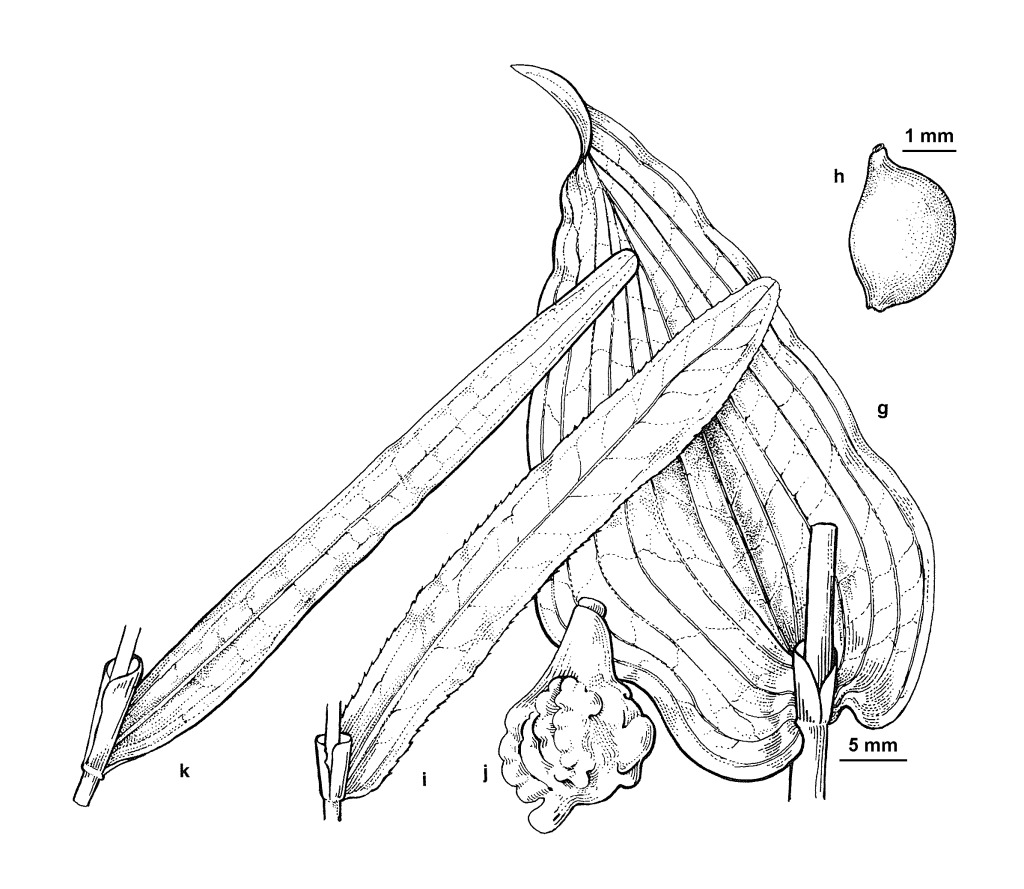Potamogeton perfoliatus
L. Perfoliate PondweedSubmerged herb, with branches terete, up to c. 2 m long. Leaf sheath free, up to 1 cm long, not persistent; ligule absent. Leaves sessile, basally clasping branch; lamina ovate to circular, 1–5(–7)cm long, 1–3(–4)cm wide, thin and translucent; base cordate; margin mostly undulate; apex obtuse; 9–21 principal longitudinal veins. Inflorescence c. 8–15-flowered. Infructescence 1–2 cm long. Fruiting carpels 2.5–3 mm long (including distal point), smooth or very obscurely keeled dorsally with 2 faint lateral ridges, distally with a ± straight point c. 0.5 mm long. Flowers and fruits Dec.–May.
MuM, GleP, VVP, MSB, RobP, GipP, WaP, GGr, EGL, EGU, HSF. Also Qld, NSW, ACT, Tas. Occurs in flowing fresh water in creeks and rivers, on sandy, stoney or muddy substrates. Apparently tolerates brackish water and still water (Aston 1973).
The leaves may be confused with the submerged leaves of P. australiensis, P. cheesemanii, and P. sulcatus; however, the clasping leaf-bases of this species readily distinguish it from these other species.
Conn, B.J. (1994). Potamogetonaceae (including Ruppiaceae). In: Walsh, N.G.; Entwisle, T.J., Flora of Victoria Vol. 2, Ferns and Allied Plants, Conifers and Monocotyledons, pp. 147–155. Inkata Press, Melbourne.
 Spinning
Spinning

